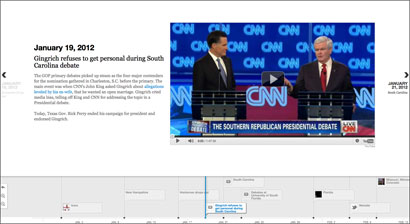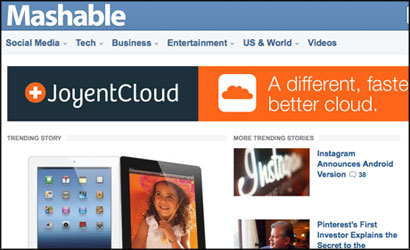Much has been written about Google+over the past few days as it continues to grow at a record-breaking pace. Here are a few links from around the web on how Google+ is shaping up, plus this post on tips, tricks and tools for journalists using the social network.
What shape is Google+ taking?
The Guardian is reporting Google+ is approaching 20m users just three weeks since it launched as a rival to Facebook.
But “Google’s social juggernaut is beginning to show signs that it’s losing steam”, according to this post on Mashable.
In the Guardian article Paul Allen, the founder of Ancestry.com, said his calculations suggest Google+ is gathering 750,000 new users per day.
Allen explains his methods: “I don’t have access to log files or to a massive consumer panel. I’m simply measuring how many Google+ users there are of various randomly selected surnames every day. Last week I increased the sample of surnames that I query from 100 to 1,000.
Over a four-day period, the 100-surname sample showed a Google+ growth rate of 28.4 per cent. The 1,000 surname sample showed a growth rate of 28.5 per cent. [That’s] statistically insignificant.
Mashable has a post looking at the key findings of a report by Experian Hitwise, which includes that 57 per cent of Google+ users are male.
Google+ is dominated by young adults. Its biggest age group for the four weeks ending July 14 was the 25-34 age bracket, which accounted for 38.37 per cent of all visits. The week before, the entire 18-34 age bracket made up just 38.11 per cent of total visitors.

Read Write Web has been taking a look whether Google+ is causing Twitter and Facebook useage to decline and, though the research methods are not scientific, the hunch is that Plus is having an impact on the use of its rivals.
That is a view seemingly shared by LinkedIn CEO Weiner. He thinks Google+ has changed the social landscape but there’s not much room left, according to a post on the New York Times.
Looking at the broad social landscape, Weiner said LinkedIn was for professionals, Facebook for family and friends, and Twitter for broadcasting short thoughts and information.
He noted that these three networks coexisting made for an “understandable landscape”, but when Google+ gets added to the mix, people have less time and will have to start making choices about where to spend that time.
“All of a sudden, you say ‘where am I going to spend that next minute or hour of my discretionary time?’ and at some point, you don’t have any more time to make choices,” Weiner said.
[He added] Google+ could follow Twitter in attracting celebrities and other well-known figures to help it become a more competitive service.
Some celebrities have already joined, and a couple are among the most followed people on Google+.
The Telegraph has been looking at who has the most followers. Many are Google bosses, plus there is blogger Robert Scoble and actress Felicia Day.
Over on the Next Web there are some thoughts on what Google+ means for your social media policy. The post states G+ is a gamechanger.
It’s all about the circles. Google+ actively encourages you to have ‘work’ and ‘friends’ as your circles. It’s a mindset shift. If you think about the user experience, Facebook is about sharing with friends and family. LinkedIn is about professional connections. Twitter allows you to choose for yourself what it’s about (see Getting past the Oprah Barrier for more about this). The Google+ user experience is all about the networks.
The Google+ experience is all about creating sub-networks of your life (circles) and populating those appropriately.
This means that users will gravitate towards having complicated, overlapping circles and the Google+ stream is a mix of personal and professional connections. This also means that the Google+ share box becomes a place where it is much easier to inadvertently share inappropriate content than perhaps the LinkedIn share box. From a policy perspective, that’s a whole lot of scary.
If you are a journalist and not yet on Google+ and would like an invite, fill in this form and I will attempt to invite you.





